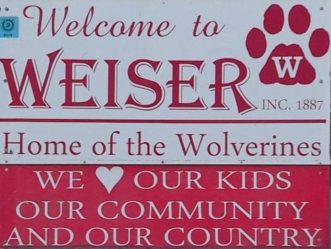Lines of Business
Weiser is home to a variety of businesses and services, making it a bustling community. The town has three general merchandise stores, four grocery stores, and two dry goods stores to cater to daily needs. There are three drug stores and six churches for healthcare and spiritual needs, respectively. Additionally, six saloons, one wholesale liquor store, and two banks (one state and one National) provide financial and social amenities.
The town also features two hardware stores, two lumber yards, and two hotels, both housed in brick blocks with a combined total of 140 rooms. Transportation and industrial needs are met by two railroads (the Oregon Short Line and Pacific, Idaho & Northern), two plaining-mills, and one brewery. Other businesses include two furniture stores, one undertaker, five barber shops, three blacksmith shops, three livery stables, and two newspapers (one weekly and one semi-weekly).
Additional amenities include two cigar stores, one ice cream saloon, two tailors, two second-hand stores, two photograph galleries, three millinery stores, and two dressmaking parlors. The town is served by three dentists, six doctors, two lawyers, four real estate agencies, two civil engineers, three insurance agencies, one electric supply house, two harness shops, and three shoemakers. For recreation, there is one bowling alley, and the community is supported by 12 secret societies.
Weiser also boasts one flouring-mill, one wool warehouse, and one brickyard, which has orders for over a million bricks. The town has a telephone exchange with nearly 200 subscribers, one fruit evaporator, two butcher shops, two lodging-houses, five restaurants, and two jewelry stores. Other businesses include one bicycle repair shop, two bakeries, one opera-house, three public school buildings with ten teachers, an academy with eight teachers, and the Idaho Industrial Institute with 11 instructors.
Old and New Weiser
When the Oregon Short Line Railroad was projected through this area, the original town of Weiser was asked to donate a right of way and depot grounds but refused. Consequently, the railroad was built about a mile to the west, and businesses relocated near the railroad station, leaving Old Weiser, with its $80,000 brick courthouse, off to one side. Although the two towns are incorporated under one name, this division makes the town of Weiser about one and a half miles in length.
From The Oregonian – Portland Oregon – May 23, 1903






